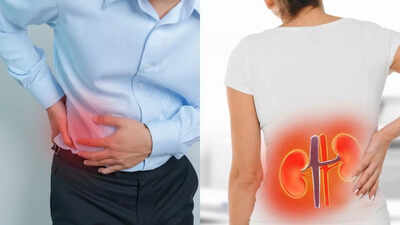ARTICLE AD BOX

Kidney stone disease (KSD) is one of the most common urological conditions worldwide, and its prevalence is steadily rising. Traditionally considered more common in men, a study published by the National Library of Medicine shows that women, particularly adolescents and younger adults, are also significantly affected.
Beyond the incidence, research indicates that the way kidney stones present in men and women can differ. Pain location, symptom severity, and quality-of-life impact often vary by gender, influenced by factors such as hormones, anatomy, and risk of infection. Understanding these differences can help patients recognize early warning signs and guide clinicians toward personalized treatment approaches.
Common pain areas in kidney stones
In both men and women, kidney stones typically cause sudden, sharp pain known as renal colic.
This pain often begins in the flank (the side of the body between the ribs and hips) and may radiate toward the lower abdomen and groin. The movement of stones within the urinary tract causes irritation, pressure, and blockage, leading to severe discomfort that can fluctuate in intensity.
Kidney stone pain presentation in men
In men, kidney stone pain is more commonly felt in the flank, lower back, and groin region. Because of male anatomy, stones moving into the ureter often cause radiation of pain into the testicles and scrotum.
Men are also more likely to present with stones during periods of high ambient temperature, possibly linked to greater water loss and more concentrated urine. Studies also show men excrete more calcium and oxalate, contributing to stone formation and the likelihood of recurrent episodes.
Kidney stone pain presentation in women
Women with kidney stones frequently report pain in the lower abdomen and pelvis, which can sometimes mimic gynecological conditions.
Pain may radiate toward the bladder area, and younger women tend to experience a stronger impact on daily functioning, with higher reports of fatigue, sleep disturbance, and anxiety linked to stone events. Post-menopausal women may experience different pain thresholds, with studies noting less discomfort during shockwave treatments compared to younger women.
Women are also more likely to develop sepsis after stone-related procedures, making their pain experience more complex and medically significant.
Other gender-based differences in kidney stone pain
Hormones: Estrogen in pre-menopausal women may offer some protective effect by reducing calcium oxalate binding in the kidneys, though this protection diminishes with age.Stone composition: Men more often develop calcium oxalate stones, while women are more likely to form infection-related stones such as struvite.Quality of life: Studies consistently show women, particularly under 40, report worse quality-of-life outcomes compared to men when dealing with kidney stones.While kidney stone pain can be excruciating for anyone, its location, severity, and impact can differ between men and women. Recognizing these gender-specific patterns not only aids in faster diagnosis but also highlights the importance of tailored treatment strategies. As the gender gap in kidney stone prevalence continues to narrow, understanding these nuances will become increasingly vital in clinical care and patient awareness.



.png)
.png)
.png)
















 8 hours ago
2
8 hours ago
2









 English (US) ·
English (US) ·